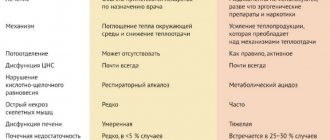Stuttering is a violation of the tempo and rhythm of speech organization, which is associated with a convulsive (contracted) state of the muscles that form speech. Stuttering is known as one of the ancient speech disorders. The essence of this condition, the mechanisms of its development, causes, symptoms and approaches to treatment differed significantly in different periods of the development of speech therapy. Different views on this problem are due to different levels of science, teachings and schools dealing with this condition. In this article we will approach this topic from the perspective of modern teachings and achievements in the field of treatment of this condition.
Stuttering is known as one of the ancient speech disorders.
What is stuttering
Medicine defines the problem as a speech disorder in which a person often repeats certain words or syllables, pronounces individual sounds in a drawn-out manner, without being able to pronounce them fully. Smoothness, rhythm, and tempo of pronunciation of phrases suffer. Doctors define the disorder by the term “logoneurosis.” According to statistics, it occurs in approximately 2-3% of people, that is, quite common.
Physiological reasons include spasms and convulsions of the muscles responsible for speaking. These disturbances negatively affect breathing, the strength and pitch of spoken sounds. The physiology of this process is similar to hiccups.
Symptoms
As a rule, diagnosing stuttering is not difficult, since characteristic speech changes are easily noticeable to others. The main symptom is hesitation in speech that occurs at the beginning or in the middle of a phrase. They look like repeated repetition of the same word or syllable, prolongation of sounds or pauses in conversation. A disorder in the coordination of speech and breathing is often observed: the child begins to speak after an almost complete exhalation and while inhaling.
Often, specific behavioral features are added to a speech disorder, which, as a rule, are used to reduce psychological discomfort. The child begins to blink, sway, smile for no reason, yawn, cough, etc. Often pauses are filled with filler words: “well”, “this”, “here”, etc., accompanied by a change in voice and rate of speech.
As the condition progresses, the child develops logophobia (fear of speech in general or specific words) or sound phobia (fear of specific sounds). Focusing on your own speech leads to worsening symptoms.
At what age does the problem appear?
Most often, a child encounters stuttering at the age of 3-4, when the speech apparatus and psyche are formed. However, logoneurosis can manifest itself at a later age - up to adolescence. The occurrence of a problem in adulthood is an extremely rare occurrence, as it is associated with the formation of the nervous system and speech function of the brain. And this period occurs at the age of 3-6 years. It is noteworthy that the disorder occurs much more often in boys, since the cerebral hemisphere responsible for speech develops more slowly in them.
Survey
The examination of such children should include consultation with specialists:
- speech therapist;
- neurologist;
- psychologist;
- if necessary, consult other specialists.
The main specialist involved in the treatment of stuttering in children is a speech therapist.
In the process of working with children, the speech therapist uses various textbooks, poems, fairy tales, and selects special toys.
The purpose of the examination is to determine the frequency, source of occurrence and form of speech spasms. The degree of stuttering and the patient’s speech abilities are also assessed. The second plan, if any, indicates accompanying speech defects.
At the end of the conversation with the patient, the speech therapist formulates a final conclusion.
What can cause a child to stutter?
Organic causes
A number of reasons are associated with problems of early development and organic lesions of the nervous system:
- genetic predisposition;
- injuries during childbirth;
- intrauterine development disorders;
- infections that the mother suffered during pregnancy;
- diseases associated with metabolism in a pregnant mother;
- frequent ENT diseases of a child in the first 3 years of life.
In these cases, curing stuttering in a child is problematic. After all, it is caused by physiological abnormalities in the development of the nervous system. Children may have impaired reflexes, a tendency to seizures, and surges in intracranial pressure. Problems can be corrected with the help of medications that are selected by the doctor.
Acquired reasons
Basically, they are associated with stress and neuroses, due to which the child may begin to stutter. Most often this happens at 4-5 years of age, when the nervous system is most susceptible to external factors. Doctors include these:
- strong and frequent quarrels;
- life changes (for example, starting kindergarten);
- unfavorable atmosphere in the family;
- sharp fear;
- excessive intellectual stress;
- emotional turmoil;
- disordered life, child's daily routine.
Often, a child begins to stutter during the period of mastering his native language, when parents begin to intensively engage in its development. The brain does not have time to perceive the entire mass of information, especially if learning a foreign language is also added to the native language. Therefore, during any intellectual activities with your baby, it is important not to overload him. Particular attention should be paid to emotional children.
According to statistics, more than 80% of stuttering cases have acquired causes. Such children do not have any physiological abnormalities, and speech disorders can be corrected quite well.
Causes of speech impediment
The causes of stuttering are usually divided into two large categories: producing causes and predisposing causes. The first type is random, impetus events and actions. The second type is the conditions that give rise to the occurrence of the disease.
Producing causes
Anatomical and physiological
- Brain injuries
- Organic brain disorders
- Exhaustion of the nervous system
- Intoxication
- Somatic chronic diseases
- Diseases of the nose, pharynx, larynx
- Speech delays
Mental and social
- Psychotrauma (short-term and long-term)
- Improper upbringing in the family
- Improper speech formation in childhood (speech while inhaling, rapid speaking)
- Overload of speech material
- Polyglossia
- Imitation of stutterers
- Retraining left-handedness
Predisposing causes of stuttering and unfavorable factors
Under certain conditions, the risk of developing stuttering increases. The likelihood of speech defects increases in the following cases:
- Neurotic burden of parents : nervous, infectious diseases of parents (for example, syphilis, alcoholism, drug addiction, intoxicating the nervous system of the fetus)
- Neurotic characteristics of the child : increased irritability, fears (for example, night terrors in children, urinary incontinence, increased irritability, emotional tension, all kinds of twitching in the muscles)
- Constitutional predisposition : state of v.n.d., susceptibility to autonomic function
- Hereditary burden : diseases transmitted from parents (for example, weakness of the speech apparatus is inherited)
- Brain damage : post-infectious, organic, traumatic brain injuries (eg, concussions, encephalopathy)
unfavorable conditions can also leave their mark :
- physical weakness of children;
- hidden mental impairment of the child;
- lack of positive emotional contacts with a loved one;
- insufficient development of articulatory motor skills, sense of rhythm and facial-articulatory movements
If a child belongs to one of the listed risk groups, then you should carefully monitor his behavior and speech. It is also worth remembering that boys stutter 4 times more often, and more than half of those who stutter acquire the disease between 2 and 5 years, 90% get sick before 10 years.
How can you tell if your child has a speech disorder?
The easiest way to treat stuttering is when it is discovered at a very early stage, before the brain has yet “fixed” the speech defect, before it turns into a reflex and affects the child’s psyche. Therefore, when he turns 3-4 years old, we recommend paying attention to the following points:
- when pronouncing phrases, the child stops, breathes quickly, as if gathering strength;
- stammers, repeats the same syllables and words;
- pronounces additional sounds before the phrase (i, a, e);
- refuses to speak at all, becomes abruptly silent;
- becomes withdrawn.
Any of these symptoms is a reason to consult a doctor. The sooner you do this, the faster and without consequences the problem will be solved.
How we work with stuttering
To successfully eliminate stuttering, it is necessary to identify its cause and, if possible, eliminate the factors that provoke and support this speech disorder. Therefore, it is necessary that the child receives consultation not only from a speech therapist, but also from a psychotherapist and psychologist. Based on the results of diagnosing the child’s current condition and the suspected causes of stuttering, various diagnostic and therapeutic measures are prescribed (for example, a Neurotest blood test, EEG, pathopsychological and neuropsychological diagnostics).
In the treatment of children suffering from neurotic stuttering, in addition to speech therapy sessions, psychological correction and psychotherapy are mandatory and basic. Various relaxation techniques, art therapy, sand and play therapy, MIM therapy, and group therapy are used. For neurosis-like stuttering, supportive drug therapy is prescribed.
At the reception, our specialists will create the most comfortable atmosphere for the child so that the classes are most effective. And using a combined therapeutic approach will allow you to achieve lasting results!
The specialist will also determine the need for family-parent consultations, help analyze family relationships and see something very important, something that cannot be seen while inside the family system.
Which doctor treats stuttering?
Speech therapist
If no physiological abnormalities are found in the child, the next step is to contact a speech therapist. This specialist specializes in the correction of speech defects and will help the child learn to correctly pronounce sounds that he cannot comprehend. The speech therapist will determine the nature of stuttering - it can be tonic (drawn-out main sounds) and clonic (stutter on consonants). And then he will choose the optimal treatment method.
- It will teach you to breathe evenly so that your breathing does not falter and remains even throughout the entire phrase.
- Place pauses to save speech effort and relieve muscle spasms.
- Form sounds using the speech apparatus: larynx, tongue, teeth, lips.
The specialist works to ensure that the baby overcomes the weakness of the articulatory (speech) apparatus. To do this, the speech therapist will develop certain muscles, for example, the larynx, neck.
Psychologist
However, in most cases, its work alone is not enough. The causes of stuttering are inextricably linked with psychological problems. They need to be corrected no less than speech. Therefore, we recommend that you also contact a psychologist. Visits to this specialist may be even more effective than visits to a speech therapist.
Muscle spasms are often associated with nervous tension and an inability to relax emotionally. Therefore, this doctor will work with a stuttering child in the following areas:
- Teaches you how to behave competently in stressful situations.
- Relax and rest.
- Control your emotions.
- Overcome your fears.
- Contact with peers.
- Express yourself through creativity and communication.
There are a huge variety of methods for psychologists to work with children who stutter. For kids, this may be the development of fine motor skills, for older children - listening to recordings of their own speech with its subsequent correction.
Is it possible to cure stuttering in a child?
Treatment of stuttering, especially the neurosis-like type, is a long process. Usually it takes about a year, but in the future it requires constant dynamic monitoring by a neurologist and taking prescribed pharmacological medications.
Timely consultation with a doctor and careful adherence to all his recommendations provide a favorable prognosis for the treatment of stuttering.
However, according to WHO, in 1% of children the pathology may persist, despite the efforts of doctors and parents. In this situation, the help of a psychologist will be effective, helping to establish communication and manage the emotional state.
What should parents do at home?
It is ineffective to cure logoneurosis without the help of parents at home, since the main support should come from them. Therefore, get ready for the fact that you will also have to contact a psychologist and learn from him. To correct psychological problems in a child, you need to change your daily routine and lifestyle at home. The best way to prevent stuttering is to avoid situations that make it worse.
Mode
Organize your daily routine so that periods of intellectual and emotional stress alternate with proper rest and relaxation.
Dream
Children must sleep at least 8 hours a day, so you need to organize your daily life, home space, and sound atmosphere in such a way as to ensure this minimum.
Intonation
The baby should feel the confidence and calmness coming from the parents, so you need to address him slowly, quietly, calmly, without interrupting him. It is important to explain to loved ones that this is exactly what needs to be done.
Praise
Develop your baby's self-confidence by praising him for any success. Create situations in which he could show his best side. However, praise for success should not be confused with pampering.
Situation
In family relationships, quarrels should remain prohibited. It is impossible to cure a child and prevent stuttering in an aggressive and tense atmosphere. The same applies to visiting noisy companies or places.
Leisure
Limit watching programs, movies, cartoons or games that cause emotional overstimulation. Leisure should be calm, aimed at developing creative abilities.
Communication
Gradually and delicately expand your child's social circle by inviting him to visit public places that do not evoke strong emotions. Introduce him to interesting people. They will help him adapt to the outside world.
Activity
Dosed physical activity has a positive effect on the nervous system, as well as muscle development. Therefore, physical education, swimming, running, just walking, playing in the fresh air should become the norm.
Restrictions
Under no circumstances use punishments that can have a negative impact on children's emotions (punishments should also be calm, no matter what offense the child commits). It is strictly forbidden to leave a child alone in a dark room.
Severity
When assessing the severity of the pathology, the severity of symptoms, their impact on the child’s communication with other people, and the presence of concomitant disorders are taken into account.
Highlight:
- mild degree - it is characterized by rare, unexpressed hesitations that do not interfere with talking and communicating. But even with this degree, parents need to contact a specialist in order to begin correction in a timely manner before the deviations become entrenched;
- medium - hesitations are more noticeable and make communication more difficult;
- severe - speech impairments are pronounced, they make communication almost impossible. Other symptoms also appear.
If stuttering is not eliminated, the cause of the pathology is not eliminated, then it gradually progresses, and very quickly.
What should adults say?
To prevent relapses of speech disorders (and they may well occur), you as parents need to change or carefully monitor your own speech. This applies to your conversations with each other. Children actively perceive the conversation around them and unconsciously imitate it:
- Speak clearly, intelligibly, without mistakes and without rushing.
- Try to pronounce the phrase a little slower than usual.
- Avoid complex words that are incomprehensible to the baby.
- Various “scary” topics of conversation are taboo.
- It is not recommended to speak in syllables or sing phrases.
Try to get your baby to make friends with balanced children who have well-developed speech. If his speech activity is too high, artificially limit it by giving him the opportunity to silently play alone with himself for some time. Try to get your child to listen more than talk.
Modern methods of stuttering correction
The formation of a modern integrated approach to the correction of stuttering was preceded by the development of various methods and ways to overcome this disease.
Despite the centuries-long history of studying and treating speech disorders, stuttering is one of the diseases whose mechanisms have not yet been fully studied and explained. It should be noted that the mechanisms of stuttering are heterogeneous. In some cases stuttering is interpreted as a complex neurotic disorder, which is the result of a “collision” of nervous processes in the cerebral cortex, a violation of cortical-subcortical interaction, a disorder of the single auto-regulated tempo of speech movements (voice, breathing, articulation).
In other cases - as a complex neurotic disorder, which was the result of a fixed reflex of incorrect speech, which initially arose as a result of speech difficulties of various origins.
Thirdly, as a complex, predominantly functional speech disorder that appeared as a result of general and speech dysontogenesis and disharmonious personality development.
Fourthly, the mechanism of stuttering can be explained by organic lesions of the central nervous system. Methods for overcoming stuttering were developed by the authors based on their different understanding of this speech disorder. The numerous methodological approaches to overcoming this pathology are explained by the complexity of its structural manifestations and the insufficient level of knowledge about its nature. The need for complex interventions in the correction of stuttering was pointed out by I.A. Sikorsky (1889) and I.K. Khmelevsky (1897). They expressed views that have not lost their significance today. So, I.A. Sikorsky included speech gymnastics, psychotherapeutic, pharmaceutical treatment and motor exercises in the treatment of stuttering.
Based on the teachings of domestic physiologists I.M. Sechenov and I.P. Pavlov and their followers, scientists and practitioners have defined a modern comprehensive approach to overcoming stuttering. L.Z. Andronova (1993), N.M. Assatiani (1980), V.A. Gilyarovsky (1932), K.M. Danilov and I.V. Cherepanov (1970), V.S. Kochergina (1960), V.A. Kurshev (1973), employees of the laboratory of the Research Institute of Defectology under the direction of R.E. Levina (1963), S.S. Lyapidevsky (1960, 1963), L.Ya. Missoulin (1988), Y.B. Nekrasova (1984), V.I. Seliverstov (2000), M.V. Serebrovskaya (1925), N.P. Tyapugin (1966), Yu.A. Florenskaya (1949), M.E. Khvattsev (1959), V.M. Shklovsky (1994), A.V. Yastrebova (1963) and others with their research contributed to the development of a therapeutic and pedagogical approach to overcoming stuttering. In the works of many authors there are instructions on some specific issues of eliminating stuttering (G.I. Angushev, 1974; S.Yu. Benilova, T.S. Reznichenko, 2001; T.G. Vizel, 1997; V.A. Kovshikov, 1976 ; Y.I. Kuzmin, 2000; V. Adamczyk, 1969; G. Andrews et al, 1982; S. Van Riper, 1982, etc.). In a number of foreign works we find interesting observations and recommendations regarding the correction of stuttering. Many clinical researchers come to the conclusion about the need for comprehensive comprehensive treatment of this speech defect, which includes speech therapy exercises, drug therapy, as well as targeted psychotherapeutic influence on the patient’s personality, helping him adapt to the conditions of the social environment (KP Bekker, M. Sovak, 1984; O.A. Bloodstein, 1995; M. Opslowsh et al., 1997; M. Seetan, 1962).
Scientific research based on experimental and clinical-psychological studies of people who stutter has made it possible to formulate valuable theoretical and practical principles and to determine the place of speech therapy and various therapeutic measures in a comprehensive treatment system. At present, there is no doubt about the advisability of a differentiated and individual approach to stutterers of different age categories, taking into account the complex structure and etiopathogenesis of speech disorders .
It should be noted that until now, researchers have expressed different and sometimes directly opposite points of view on this speech pathology. Most researchers and practitioners working on this problem are still of the opinion that it is necessary to comprehensively study and treat this speech disorder, and to select certain methods of complex therapy. In these conditions, there is a need to search for common conceptual foundations for the interaction of specialists and coordinate their activities.
In the rehabilitation of people who stutter, an integrated approach is currently used, since impaired speech fluency is associated with a number of reasons, both biological and socio-psychological.
Firstly, it is a combination of correctional pedagogical and therapeutic work, which is aimed at normalizing all aspects of speech, motor skills, mental processes, educating the personality of a stutterer and improving the health of the body as a whole. Secondly, an integrated approach includes a system of clearly demarcated, but coordinated means of influence by different specialists. This involves the joint work of a doctor, speech therapist, psychologist, rhythm specialist, functional diagnostics specialist, physiotherapist and social worker. Currently, the specialized literature presents both some methods of speech therapy work with people who stutter (covering only certain aspects of the problem that interests us), as well as a number of complex rehabilitation systems, the conceptual basis of which is to take into account the characteristics of the patient’s psychophysical development, the etiology, mechanisms and symptoms of the disorder, including speech disorders. , psychological, motor, age characteristics of this patient population.
According to L.I. Belyakova, E.A. Dyakova (1998); V.A. Kovshikova (1976); M.I. Lokhova, Yu.A. Fesenko (2000); V.M. Shklovsky (1994) and others, when developing rehabilitation measures, the nature of the primary damage to the nervous system in various forms of stuttering should be taken into account. In the neurotic form of stuttering, therapeutic interventions should be aimed at reducing the excitability of emotiogenic brain structures, which can be achieved through a combination of medications and various psychotherapeutic techniques (stress therapy, hypnosis, autogenic training). Speech therapy classes against this background are much more effective.
People who stutter with a neurosis-like form of speech defect require long-term correctional and pedagogical interventions that promote the development of regulatory functions of the brain (stimulation of attention, memory and other mental processes), and special drug treatment aimed at reducing the consequences of early organic brain damage. Speech therapy sessions for this group of stutterers should be regular over a considerable period of time. The complex of therapeutic and psychological effects necessarily includes methods aimed at rhythmizing movements.
Thus, according to the authors, in cases where the neural mechanisms of stuttering are associated with organo-functional damage to the motor structures of the brain, normalization in the functional speech system should occur through the development of new speech motor reflexes, while in neurotic stuttering treatment is aimed at restoration and strengthening of existing speech motor automatisms acquired in early speech ontogenesis. In connection with the tasks of diagnosis and pathogenetic substantiation of complex logotherapy V.M. Shklovsky (1994) proposed a classification of patients with stuttering, in which, along with the manifestation of speech pathology itself, the degree of disorganization of personality relationships is taken into account. This differentiated approach to adult stutterers made it possible to clearly define the place of speech therapy and various psychotherapeutic measures in the complex system of stuttering treatment . The complex medical and pedagogical system for the treatment of stuttering developed by the author most fully takes into account the various aspects of the clinical and psychological picture of stuttering. Such an assessment of the etiopathogenetic basis of stuttering largely reveals the essence of the problem and directs specialists to a comprehensive approach in the correction of speech disorders. In our opinion, based on the focus of this manual, we should dwell in more detail on the features of correctional and pedagogical work in the treatment of stuttering .
Since people who stutter have specific disturbances in the fluency of speech, features of its tempo-rhythmic organization, as well as changes in the motor sphere relating to dynamic praxis and musical-rhythmic abilities, this necessitates the formation of a rhythmic-intonation organization of oral speech, which is one of the important links in a complex method of stuttering correction.
Researchers and practitioners have noticed that rhythmization of movements leads to normalization of fluency of speech. To develop unity of speech in people who stutter, various methods are used to rhythmize speech: pronouncing words, phrases to music, a metronome, singing, training speech in the process of speech therapy rhythms, synchronizing speech with the movements of the fingers of the leading hand, etc. Classes with musical accompaniment with rhythmic movements of the arms, legs, torso, and subsequently the combination of these movements with singing, melodic recitation, reading poetic and prose texts optimize the flow of speech utterance (L.Z. Andronova, 1993; L.I. Belyakova et al. , 1992; G.A. Volkova, 2003; E.V. Oganesyan, 1981; N.A. Rychkova, 1999).
According to N.A. Vlasova (1959), overcoming stuttering is most effective in the process of gradually developing speech from conjugate pronunciation to normal speech. IN AND. Rozhdestvenskaya (1960) offers a system of relaxing, breathing, and vocal exercises in a playful form, as well as tasks for developing speech coordination with various movements aimed at correcting the tempo of speech. The author attaches leading importance to this aspect of the work. Developing the above provisions, E.Yu. Rau (1994) examines the dependence of the severity of stuttering on communication conditions and the ways in which stutterers adapt to difficult communicative situations.
G.A. Volkova (1979, 1994) believes that when working with preschool children attending speech therapy kindergarten, stuttering must be overcome through play activities. The author emphasizes that gaming activities make it possible to create various situations that reflect real events and relationships between people. Participation in a variety of game situations, playing roles from secondary to leading, develops the necessary personality qualities in people who stutter. In the process of differentiated use of play activities, the personal deviations of stuttering children are corrected and, on this basis, their speech is developed.
N.A.’s methodology is based on slightly different theoretical positions. Cheveleva (1978). The author believes that it is necessary for stutterers to develop only independent speech (situational and contextual) in the process of manual activity. The author does not consider it necessary to use breathing, vocal and other exercises aimed at correcting the rate of speech. ON THE. Cheveleva emphasizes that a calm, somewhat slow pace of making crafts normalizes the rate of speech of preschoolers and schoolchildren. Speech education using this method takes place in several stages: propaedeutic stage, accompanying speech based on visual objects and actions, final speech about a completed action, preliminary speech without reliance on a past action, consolidation of active speech or contextual speech.
M.I. Gerkina (1972), as well as later E.M. Pellinger et al. (1995), taking into account the situational nature of stuttering and the disruption of the communicative function of speech in children, proposes a method of story games. The correction begins with playing out stories with an imaginary interlocutor, which, according to the author, gives the installation of correct speech behavior in real situations of communication with peers. At the next stage, everyday themes are played out, and at the end of the course they move on to role-playing games. The speech therapist suggests the plot of the game, directs the action, and stimulates speech activity. A.V. Yastrebova (1999) developed a system of correctional education for stuttering schoolchildren, which provides, in the process of speech therapy classes, the formation of their free communication skills, the development of observation, sustained attention, and the ability to switch quite easily and quickly from one type of activity to another.
A.I. Bogomolova (1977) argues that the importance of neurotic manifestations in people who stutter is exaggerated. According to the author, as speech improves during speech therapy sessions, secondary neurotic layers disappear. Hence the focus of speech therapy techniques based on scanned speech exercises, which should be accompanied by conducting movements of the patient’s hand. It is difficult to agree with the author’s statement that the characteristics of the course of the disease in preschoolers and adolescents are based only on the long experience of stuttering in children of senior school age.
T. Verendes (1963) in his method of overcoming stuttering suggests using the “scene test” of G. Staabs. In the scenes (games) that the child builds with the help of dolls, the hidden conflict situation is revealed and at the same time mental tension is released. To enhance the impact and relieve psychophysical stress, the author suggests including autogenic training exercises and revealing subconscious experiences in hypnosis. Methodology V.I. Seliverstova (2000) is primarily designed for working with children in medical institutions. In the lesson plan proposed by the author, speech exercises become more complicated depending on the varying degrees of independence of speech, its preparedness, structural complexity, and the types of activities during which verbal communication occurs.
I.Yu. Abeleva (1969), as well as V.I. Seliverstov (2000), recommends starting work with preparatory exercises on speech technique: breathing, voice, articulation. Speech exercises for stuttering correction are based on the principle of gradually increasing the complexity of speech components. The literature on the problem of stuttering in adolescents and adults contains programs that highlight the most general views on eliminating stuttering. All modern systems of speech therapy classes with stuttering adolescents and adults are united by the presence in them (in addition to progressively more complex speech exercises) of various methods of psychotherapy, physiotherapy, and drug intervention.
The issue of using autotraining in the treatment of stuttering was developed by S.M. Lyubinskaya (1970), L.Ya. Missulovin (1988), Yu.B. Nekrasova, S.F. Orlovskaya (1966), V.M. Shklovsky (1979, 1994). What is common in the works of these authors is that autogenic training is recommended to be used in a complex of therapeutic and correctional measures along with other methods of psychotherapeutic influence.
The work of V.M. is specifically devoted to the issue of using various methods of group psychotherapy in the treatment of adults who stutter (discussion, nonverbal communication, projective drawing, sociometry, etc.). Shklovsky, L.M. Krolya, E.L. Mikhailova (1985).
One of the most famous methods of psychotherapy in the 50-70s, as B.D. points out. Karvasarsky (1990), is a group session of emotional stress therapy with elements of imperative suggestion according to K.M. Dubrovsky (1966). During the session, the patients’ negative emotions associated with fear of speech are contrasted with the life-affirming emotions of new psychological attitudes. In relation to stuttering, the technique was studied by Yu.B. Nekrasova (1984), which points to the possibility of changing the patient’s attitude towards suffering in a short period of time. In her opinion, the totality of mental states induced during a session of emotional stress psychotherapy causes new sthenic states in people who stutter: activity, readiness to overcome the psychological barrier and speak in extreme conditions.
V.M. Shklovsky (1994) introduced a session of suggestion while awake into the course of complex treatment of stuttering as a powerful psychotherapeutic technique aimed at eliminating patients’ fear of speech in emotionally significant situations. He also described in detail the methodology for conducting sessions, which provides for long-term consolidation of the results achieved during the session. Speech exercises in systems of logopsychotherapeutic sessions with people who stutter are based on methods generally accepted in speech therapy, taking into account the age characteristics of patients.
Many researchers who have studied tempo-rhythmic speech disorders (in particular, stuttering) note the important role of changes in the prosodic side of speech in the structure of speech disorders (Max L., Cariso A., 1997; Opslow M., et al., 1997). Researchers indicate that these characteristics can change under the influence of training.
According to M. Zeetan (1962), consciously slowing down the rate of speech is the basic principle of all corrective measures, despite their apparent diversity. When speech slows down in people who stutter, the correct coordination of respiratory, vocal and articulatory movements is established, and muscle tension and cramps are significantly reduced.
Statistical analysis of various treatment programs by G. Apdrews et al. (1982, 1983) is quite consistent with this view. The authors believe that the most favorable results are achieved by those stuttering correction programs that involve training in slow speech. Some researchers consider slowing down the rate of speech not only necessary, but also a sufficient therapeutic effect (R. A. Resick, P. Wendiggensen, S. Ates, V. Meyer, 1975). I.A. Povarova (2000, 2001, 2002) believes that a violation of the tempo-rhythmic parameters of speech is one of the leading components in the structure of stuttering and is characterized by polymorphism, persistence and variability of manifestation. Features of tempo-rhythmic characteristics of speech in people who stutter depend on the form of speech, the severity of the disorder and individual psychological status and are manifested in changes in the duration of structural segments of the speech signal and their coefficient of variation. The dynamics of these indicators makes it possible to predict the result of speech therapy and the choice of correction methods. It should be noted that an integral part of every speech therapy method for stuttering correction is work on intonation. Some authors consider it necessary to develop emotional, expressive speech in people who stutter from the very first lessons. This approach is followed by M. Zeman (1962), who has a negative attitude towards monotonous and monodynamic speech.
AND I. Yastrebova (1962, 1999) suggests focusing work on intonation on developing the ability to listen to someone else’s speech and convey the appropriate intonation in one’s own speech. Expressive speech requires the stutterer to be able to master different speech rates and voice modulations. At the initial stages of correction, students find it difficult to transfer the skill developed in classes in conditions of natural communication, therefore, a gradual path to mastering different tempos of speech is necessary for stutterers. Some experts suggest paying attention to working on intonation at the end of a course of speech therapy classes (A.G. Shembel, 1961), which contradicts the holistic formation of a functional speech system in the process of speech therapy work. Other authors recommend that stutterers use monotonous, monodynamic speech to help overcome speech cramps and ensure unity of speech. In this case, it is difficult to disagree with A. Liebmann (1901), who noted that artificial speech attracting the attention of others can “worse” a speech disorder. However, if we consider monotony as a means of reducing seizures, then it is probably necessary to use it at the first stage of speech therapy classes. The positive properties of monotony were also pointed out by I.A. Sikorsky (1889). The author found that monotonous speech is devoid of natural rises and falls in the tone of the voice. Such speech is one of the means that reduce stuttering very significantly; the transformation of natural speech into monotonous simplifies speech and facilitates the task of articulation for a stutterer.
Recommendations for improving speech tempo for both children and adults who stutter are contradictory. N.P. Tyapugin (1966) points out that treatment of stuttering at any age and in any period begins with re-education of the speech of a stutterer based on teaching him somewhat slow and smooth speech, which has regulatory significance. According to J. Brady (1969), by slightly slowing down the rate of speech, convulsions can be eliminated in almost any stutterer. The effectiveness of speech slowing techniques is also noted in the work of R. Resick (1975). However, there is another opinion regarding the formation of speech tempo in people who stutter. For example, L.N. Meshcherskaya (1982) believes that all known methods of eliminating stuttering are based on slowing down the rate of speech. The unnatural slow pace of speech and the fear of ridicule from others are the reasons for violating the recommended speech regime, which leads to relapses of stuttering. The author suggests working to overcome stuttering by forming a normal or close to normal speech rate.
Of interest is the opinion of individual authors regarding the tactics of forming the tempo of speech in people who stutter. Their recommendations boil down to the fact that after practicing speech skills using a slow speech rate, work should be done to speed it up. M. Seeman (1962) pointed out that all therapeutic exercises for stuttering are based on a single principle - a conscious change in the accent and tempo of speech in the first period of treatment and a gradual transition to normal speech.
The most detailed approach to overcoming stuttering in adult stutterers is described in the work of G. Apdrews, R. Howie (1981). Initial training is carried out at a speech rate of 50 syllables per minute, which, according to the authors, is approximately a quarter of the standard rate and is the optimal speed at which stuttering rarely occurs. Then gradually (within a week) the speech rate of stutterers increases to the norm. T.G. Wiesel (1997) believes that with all types of work to correct the fluency of phrasal speech, its pace should be normal and take into account the individual characteristics of the speed of pronunciation. At the same time, the author notes the need to gradually complicate the rhythmic and semantic structure of the phrases being practiced in accordance with linguistic patterns.
L.Z. Andronova (1993), taking into account the need to slow down the speech rate of people who stutter, believes that it cannot be imposed forcibly. Therefore, at the initial stage of treatment, she considers it appropriate to introduce syllable-by-syllable speech with external support (rhythmization of speech with movements of the fingers of the leading hand). A number of studies have shown that instrumental interventions used to correct stuttering affect speech speed in different ways. Silencing speech with noise has little effect on the temporal characteristics of the speech of people who stutter (O.V. Wessart, 1983). A delay in acoustic feedback leads to a significant slowdown in speech and a significant reduction in the number of stutters (N.I. Zhinkin, 1958; Yu.I. Kuzmin et al., 1991). L.Ya. Missulovin (1988) determined the indications for the use of the AIR apparatus, based on the use of the effect of delayed acoustic feedback, and proposed a method for correcting the tempo and rhythm of speech in the course of complex treatment of stuttering; the level of signal delay is determined in each specific case individually.
I.V. Danilov and I.M. Cherepanov (1970) investigated the influence of different metronome rhythms on the speech of stutterers and found that with the “tonic form of stuttering” the maximum increase in speech speed (by 83%) occurs at a frequency of 1 Hz (60 metronome beats per minute), and with the “clonic form of stuttering” "—at a frequency of 2.17 Hz (130 beats/min). According to M.I. Lokhova and Yu.A. Fesenko (2000) with a mixed type of stuttering, maximum speech coherence is achieved at frequencies of 1.3-1.5 Hz (80-90 beats/min), which is consistent with the data of other authors (Demuth et al. 1981).
L.Z. Andronova, M.I. Lokhov (1983) understand stuttering in accordance with the concept of N.P. Bekhtereva (1988) as a stable pathological condition. They have developed a method for the treatment of stuttering, which involves the destabilization of a stable pathological speech system by means of photophonostimulation against the background of the administration of subclinical doses of etimizol, the formation against this background of new stable rhythmically controlled connections and the use of a new functional state of the brain in order to assimilate speech therapy (in particular, suggestive) influences for formation of a new speech system. The frequency of phonostimulation is combined with the frequency of photostimulation, which is selected based on the data of the EEG reaction of the rhythm assimilation of a given patient.
Researchers studied the effects of rhythmic photostimulation on the speech of people who stutter, which was significantly improved by photostimulation at low frequencies (1.2-2.3 Hz). These data were obtained in a study of adult stutterers (L.Z. Andronova, M.I. Lokhov, 1983; M.I. Lokhov, 1994). Artificial control connections formed by a combination of light and sound influences are supported using portable metronomes “Ri. According to the authors, the use of a metronome at a code frequency protects speech from breakdowns and reduces the number of relapses. In the process of mastering new speech stereotypes, the development of the articulatory apparatus, mastery of rhythmic syllabic speech, relaxation of the body muscles and articulatory apparatus, elimination of accompanying movements, and mastering of psychotraining exercises are carried out, including elements of autogenic training against the background of a given rhythm.
Some researchers note that the introduction of simple metronomic feedback at a certain frequency, without complex equipment for analyzing EEG rhythms, also produces a significant positive effect (Armsop et al., 1997; Christenfeld, 1996).
G.I. Angushev (1974), studying the role of voluntary control of performed activities, obtained experimental data indicating a hierarchy of levels of self-regulation. The author pointed out that the difference between people who stutter and people without speech pathology lies in the nature of the relationship between two levels of regulation: voluntary (consciously controlled) and involuntary (unconsciously controlled). In people who stutter, regulation is carried out at a higher level than in healthy people. As a result, the process of automation of activity is complicated, which causes instability of dynamic stereotypes formed during the correctional pedagogical process and requires regular exercises.
In the process of stuttering correction, the leading role belongs to training aimed at developing a new stereotype of speech production. The work is carried out using various technical means. In pedagogical practice, since the 60s of the 20th century, the method of biofeedback (BFB) began to be used. The biofeedback method, based on the body’s self-regulation mechanisms, leads to the establishment in the central nervous system of new functional connections necessary to obtain the desired effect, which are consolidated during the learning process. Using this method, people who stutter are able to independently control and regulate individual parameters of their functions (breathing, voice production, etc.). Biofeedback, based on the transformation of a speech signal into a visual image, is effectively used in the process of comprehensive rehabilitation of people who stutter and has a positive effect on the process of speech formation (T.K. Korolevskaya, 1996; O.S. Orlova, 2003; I.A. Povarova, 1995, 2003; A.A. Smetankin, 1999, 2002, etc.). The issue of the effectiveness of complex treatment of stuttering is covered in the works of G.A. Volkova (1983); L.S. Volkova, S.N. Shakhovskoy (2002); ON THE. Vlasova, K.P. Becker (1983); V.G. Kazakova (1973); V.A. Kovshikova (1972); V.A. Kursheva (1973); M.I. Lokhova (1994, 2000); IN AND. Seliverstova (2000); V.M. Shklovsky (1967, 1994) and many other studies.
The ambiguity of researchers' views on treatment results is due to different approaches to determining assessments and criteria for the effectiveness of correction of this speech disorder.
The effectiveness of stuttering correction is determined by a number of factors: • the nature of the defect and the severity of its symptoms (speech, motor and neuropsychic characteristics); • timing of the start of corrective action and its duration; • complexity of impact; • the adequacy of the chosen methods of correctional influence, taking into account the age and psychological characteristics of students, etc.; attitude towards learning. The high plasticity of the central nervous system, the choice of the right means and methods of influence, and other factors determine the generally favorable prospects for the process of stuttering correction.
Thus, in matters of overcoming stuttering, researchers still express different points of view, of which, in our opinion, the most correct seems to be the one that provides for an integrated medical, pedagogical and psychological approach to the problem of rehabilitation of people who stutter. The material is taken from the book by Povarova IA “Correction of stuttering in games and training.”
What to do to get rid of stuttering
Many celebrities have overcome stuttering. It is now difficult to believe that Elvis Presley, Bruce Willis, and Winston Churchill suffered from this defect. You can get rid of it forever. Your child can do this, no matter what speech defect he or she has. However, this requires serious effort, perseverance, and patience.
Here are the elements on which your success should rest:
- Emotional calm.
- Correct speech construction.
- Organization of the child's daily life.
- Thoughtful daily routine.
- Regular sessions with a speech therapist and psychologist.
The main thing is to practice regularly and not lose control of the problem.
There are three degrees of stuttering:
- Mild - the child stutters only when he is excited or in a hurry to say something. He easily overcomes hesitations and is not ashamed of his stuttering.
- Average - the baby speaks easily and stutters little when he is calm and in a familiar environment. When excited, in public and in conversations with unfamiliar people, stuttering intensifies.
- Severe - the child constantly stutters, speech spasms are accompanied by accompanying movements (stepping from foot to foot, tilting or tilting the head, clenching fists, closing eyes, etc.).
Once it occurs, stuttering can become permanent, occur in waves (intensify or weaken, but do not disappear completely) or recur (completely disappear and then reappear after a sufficiently long period of free speech).









